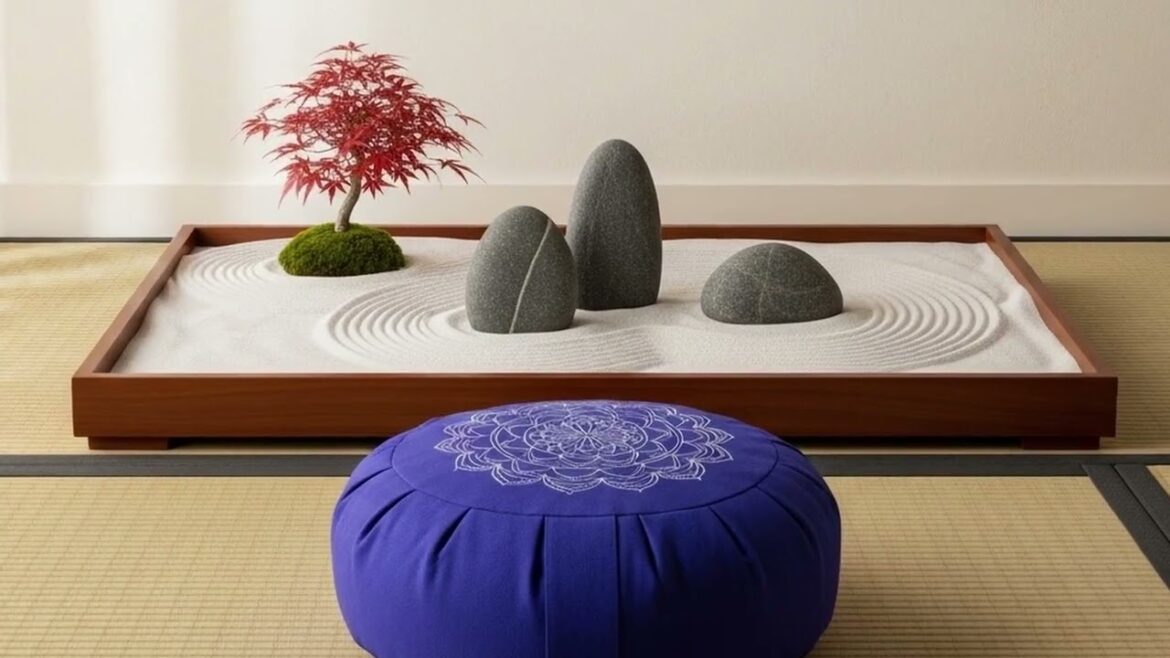Discover inspiring indoor Japanese garden design ideas that bring peace, balance, and natural beauty into your living space. From the simplicity of stone and sand arrangements, lush greenery, bonsai, and bamboo, to calming water elements, Japanese gardens create a serene atmosphere perfect for meditation, relaxation, or elegant home decoration.
In this video/article, we explore design concepts ranging from mini Zen gardens, bonsai displays, shoji screens, and rock arrangements, to small indoor ponds that harmonize with modern interiors. Transform your home into a tranquil retreat with the timeless elegance of Japanese aesthetics.
#JapaneseGarden #IndoorGarden #ZenDesign #HomeDecor #InteriorDesign #IndoorPlants #GardenInspiration #ZenStyle #JapaneseInterior #HomeIdeas
Welcome to the art of calm. This journey will take you into the heart of Japanese wisdom where even the smallest design elements carry deep meaning. An indoor Japanese garden is not only about decoration. It is about creating a sanctuary of harmony, serenity, and reflection inside your home. The bonsai is more than a plant. It is a living philosophy. Each branch shaped over years. Each leaf cared for with devotion. It teaches patience, humility, and the delicate balance between control and surrender. [Music] Bamboo bends but never breaks. It reminds us of resilience. Beside it, the stone lantern glows softly, a symbol of light guiding us through the stillness of night. Together, they embody strength with gentleness. [Music] Water is life, movement, and reflection. Even in a simple bowl, its ripples speak of calmness. In every drop, the reminder, peace is found not in abundance, but in presence. [Music] Moss grows quietly without demand. It covers stones with softness, showing us that time heals and patience nurtures beauty that cannot be rushed. [Music] Shoji doors let in light but soften it. They are thresholds between the outer world and the inner sanctuary. To open them is to step from noise into silence, from haste into stillness. [Music] Rocks are the bones of the earth. In a Japanese garden, their placement is intentional. They represent permanence, grounding us amidst the fleeting nature of life. With every line raed in the sand, the mind follows. The rhythm becomes meditation and the act of shaping sand becomes the act of shaping thought. [Music] A bridge, no matter how small, is always a symbol of passage. It connects one state of being to another, reminding us that every crossing is a chance to transform. [Music] The Tori is a gateway, an invitation to step into the sacred. Even in miniature, it carries the weight of tradition and the reminder that tranquility is a spiritual experience. Coke dharma or moss balls are gardens that float. They suspend nature in midair, creating beauty that defies gravity and awakens wonder. [Music] Sitting low to the ground roots us in humility. The tatami beneath us. The table before you. Simple elements that encourage presence, quietness, and connection. [Music] A pond, even when small, mirrors the soul. Watching Koi glide in silence brings calm, reflection, and a rhythm slower than time itself. The sound of water trickling through bamboo is a lullaby of life. Constant yet gentle. It reminds us that flow is the true strength of existence. The tea ritual is an art of slowing down. Each gesture, each pour is deliberate. It is not about drinking te is about tasting presents. [Music] The lantern does not shout at whispers. Its warm glow transforms the night, reminding us that peace often arrives in soft, quiet light. [Music] One brush stroke can hold an ocean of meaning. Japanese calligraphy is not just writing. It is silence captured in ink. Presence captured in form. [Music] To walk barefoot on stones is to touch the memory of rivers. Each step teaches us that the earth itself can guide our journey. [Music] The pagod rises in tears, grounded yet reaching skyward. It is a symbol of aspiration, reminding us to root ourselves deeply while striving higher. Ferns grow in shadows. silently unfurling. They remind us that not all growth needs the spotlight. Sometimes beauty thrives quietly in shade. [Music] To sit in stillness before a garden is to travel without moving. The journey is inward and the seat becomes the doorway to self. [Music] Privacy in Japanese design is not about shutting out. It is about soft division. The screen suggests rather than blocks guiding us into calm separation. Even fabric can carry spirit. The kimono folded with care represents tradition and the hands of artisans who wo patience into beauty. The maple carries the seasons into our rooms. Its shifting leaves remind us that impermanence is not loss. It is transformation. [Music] A stone bowl filled with clear water is an offering not to others but to ourselves as an invitation to pause, breathe and be present. [Music] The wind chime gives air a voice. It turns silence into melody, reminding us that even the unseen can sing. Ikabana is the art of restraint. One flower, one branch, one line. teaching us that beauty often grows when we remove the unnecessary. Shadows do not hide beauty, they reveal it. In darkness, the garden speaks softer and its whispers reach deeper. [Music] Each stone in a path is a pause. Walking slowly, step by step, becomes meditation, reminding us that stillness can be found in motion. [Music] A reflection is not an illusion. It is a reminder. What we see in the garden is also within us, doubled and deepened. Within four walls, the garden blooms. It proves that tranquility is not found far away. It is built, tendered, and chosen. Serenity begins where we decide to create it. [Music]


Comments are closed.